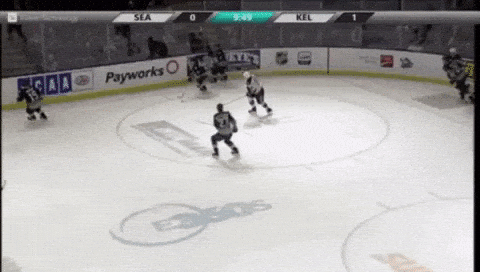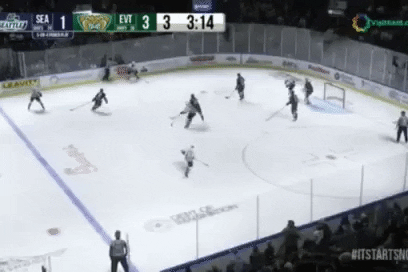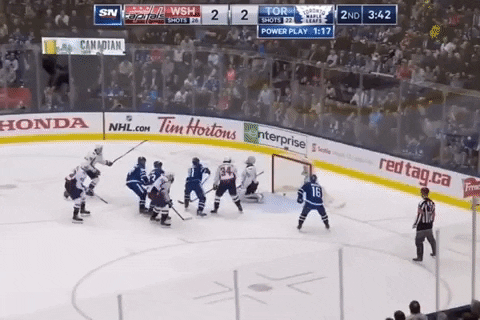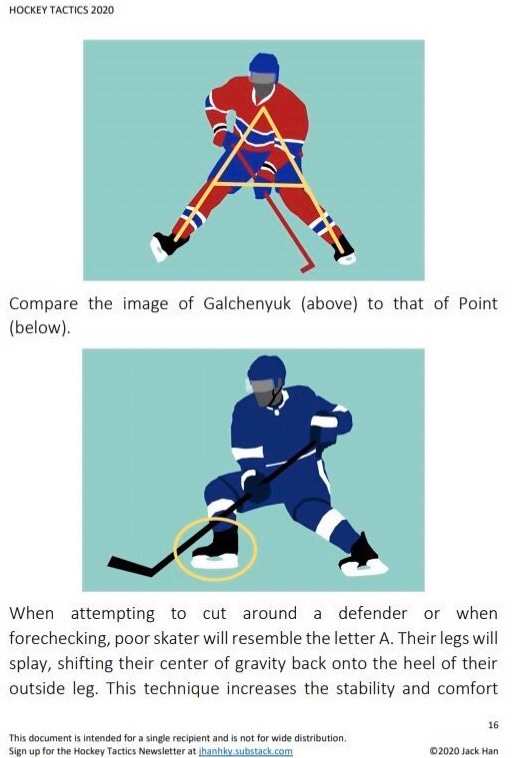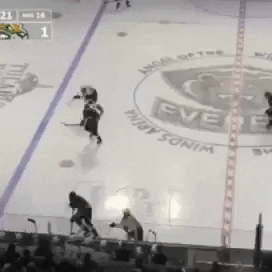Scouting the Dallas Star's Conner Roulette
Breaking down a scout's report
In this post, we collaborated with Justin Froese, head Western Canadian scout for Future Considerations. Justin was gracious enough to provide the report, and we offer our own color commentary.
Left-winger Conner Roulette plays for the Seattle Thunderbirds in the WHL.
Roulette recorded an impressive 39 points in 54 WHL games as a 16-year old.
The NHL Central Scouting Service (CSS) recently ranked Roulette as an “A” level prospect. In the 2021 NHL draft, the Canadian will likely be picked between the late 1st round and the 3rd round.
Scouting Report
When breaking down players, most people focus on individual skills in isolation - Skating, shooting, passing, physical, etc.
What the elite coaches, management, and scouts understand is that it’s not just having skills, but how the skills work together to make an effective player… a.k.a. understanding how players are able to multitask.
Justin spent extensive time watching the film on Roulette, and here is the skinny (below with the yellow/orange vertical column):
Mental
Roulette is an offensive-minded player who shows attentive detail to the basics of the game. He shoulder checks and surveys the ice before arriving to pucks to try and create a blueprint for the play. He still tends to try to attack opponents 1-on-1 instead of opting to find and use help when on the attack.
Justin isolates the basics of the game. In this case, Roulette shows great awareness, something we’ve discussed and written about in the past as a vital skill for all players. These types of key fundamentals drive effective performance time and time again.
A 1v1 situation at the NHL level is successful around 8% of the time. So, unless your name is Connor McDavid or Nathan MacKinnon, you are required to find other ways to create offense. Scanning the ice and identifying help is critical.
Hands
He has a good set of quick hands that allows him to both control pucks with deceptive components and hit targets with accurate and crisp passes. He does leave pucks unprotected out in front of his body instead of controlling play from the hip.
Roulette has an asset with his quick hands. How Roulette carries the puck, known as puck positioning, is a weakness. Too often the puck is in front of his body where it’s exposed to defenders.
Pucks should be carried to the side, sometimes referred to as in the “hip pocket.” Carrying the puck there allows for quicker passes as no stickhandling is required to release the puck. Also, carrying the puck in the hip pocket increases deception as the defender has to respect a pass, shot, or deke. Defenders are then guessing and hesitating, both of which allow for more time and space to make plays.
Skating
His skating edges are very solid for his age which allows him to move past opponents like a greased pig when courted by defenders. Although quick enough to slip coverage, he doesn’t utilize crossovers near enough to gain speed nor does he have the flexion and strength in his legs to generate the power to be classed as a high-level skater.
In essence, Roulette is an average skater who can lean heavily into his inside edges to evade basic pressure. He primarily is on his inside edges and therefore lacks deception, power, and efficiency. You’ll notice this later in his film.
A majority of his issues can be fixed by simply narrowing his feet to produce a quality glide and dynamic position. Adding linear crossovers to Roulette’s game would be a massive upgrade. Time in the gym/yoga studio should take care of the rest.
Film
#34 Blue- Carrying the puck up the wall results in a turnover in the neutral zone. Gets possession and takes off to transition the puck as a play driver into a disadvantageous scenario.
He picks up the puck just fine and once he gets into stride he attempts to take on the oncoming pressure without support. While this shows his confidence and some of his weaknesses in foot speed and puck protection, the main concern is not any of those.
As Roulette is pressured and forced to make a decision with limited space, he stops moving his feet, attempts to make a last-ditch maneuver to contain the puck, he opens up his body position and ultimately loses possession.
Roulette skates up the wall and is unable to get past the forechecker. He needlessly exposes the puck and causes a turnover. This is the exact weakness in stickhandling that Justin touched on earlier. It also is showing a lack of thinking while skating full speed as he fails to read the ice properly.
#34 White - Now, switch gears to this power play scenario. Roulette gets the puck at the half-wall after a faceoff win.
While he does end up making a strong deceptive play cross-seam, freezing the defenders and finding a weak-side shot option, it is important we not only see the result but how it was derived.
To make such a play, the landscape around him and his feet were stationary and in a position where if forced to the wall, he didn’t have a dynamic stance to explode to create another vantage point.
Roulette’s skating inefficiencies really appear clearly here. He shows limited movement when he receives the puck and also when he releases the pass. Great deception, quick hands, and an over-aggressive PK bail him out of a bad spot - catch the puck, drift wide, hold the puck with weight centered, pass. Roulette is only doing one thing at a time, a common theme.
Compare that to Auston Matthews:
Matthews catches the pass with some momentum, attacks the middle of the ice, and shifts from his left foot to his right foot to shoot and score. He keeps both feet under him rather than splicing into an “A”. This allows him to be dynamic in his movement,
The best visualization of this is from Jack Han, who included this in his book, Hockey Tactics 2020. Roulette is the “A” and Matthews is the dynamic position.
#34 Blue - We see a better example of Roulette executing such skills and fusing elements together on this zone entry.
He picks up the puck on his backhand and notices the defender is shading outside
He accelerates towards the defender and reads the stick pressure, he uses his edges and eyes to deceive by going inside. The defender crosses his feet and become off balance as he works the triangle with his quick hands.
Here, we can see Roulette starting to multitask a bit more. This is really the first time we’ve seen him accelerate into the puck and utilize crossovers. He does a nice job of reading the defender being in a bad spot and creates a speed differential.
Skill in Motion: Breaking down silos to multitask
As you can tell from the report above, Roulette has a great base of skills. You don’t get an “A” rating from CSS without that. So what should he do to take his game to the next level and accomplish his goal of playing NHL hockey?
Continuing to work on his fundamentals will be crucial - skating technique, using his body to protect the puck, puck positioning, and adding strength to his frame.
Beyond the fundamentals, learning to play with speed and synchronization is the key. Mental agility and speed in general and pushing the introduction of skill elements go a long way in breaking down the walls between the tool compartments one possesses. Playing the game in isolation is like serving a BLT sandwich without one of the core ingredients. In sport, that is often the difference between average and elite.
Here, Justin is alluding to the ability of multitasking. In all of the above film examples, Roulette is showing off his skills in isolation. That is simply not enough for the NHL level.
While lauded for creating a high-level skill play, a lot of what Conner Roulette and many others do in junior is showcase their abilities in isolation.
Watch a youth game and you’ll quickly pick up that most players stop skating in order to pass or shoot. They can execute each fundamental fine in isolation, but struggle when asked to piece multiple skills together. If they try to skate and pass or shoot, passes miss teammates and shots miss the net.
What should Conner Roulette do?
Conner Roulette can do all of the basic skills and outplay junior-level opponents with a normal offseason training regime. What is truly missing is his ability to blend and stack his skills together.
If he wants to take his game to the next level, Conner should be overloading his body and brain as much as possible when training. Breaking down the skill silos to multitask will be key for Conner as he attempts to make the leap from good to great.
Further Scouting Reports
Emil Andrae - Looking at effective body contact for a 5’9” defenseman
Looking at the skills of the Michigan trio - Owen Power, Matt Beniers, & Kent Johnson
Did you enjoy this newsletter?
Help us spread the ideas within and share it with the people you care about


